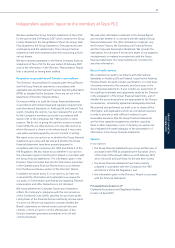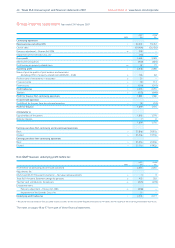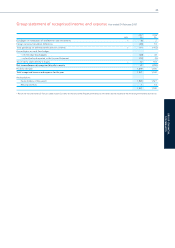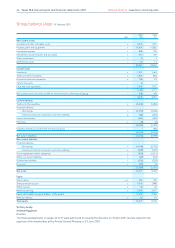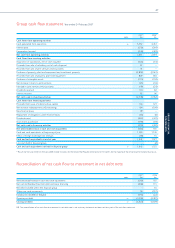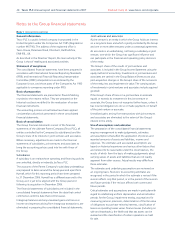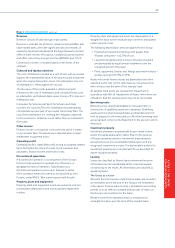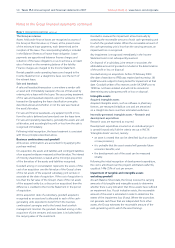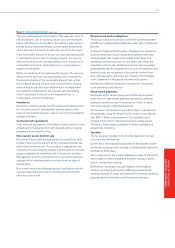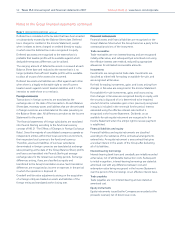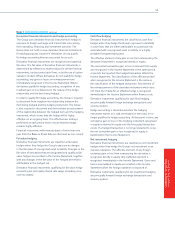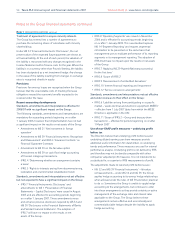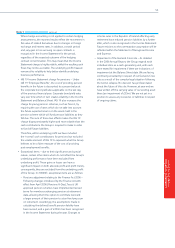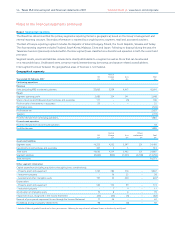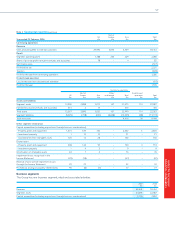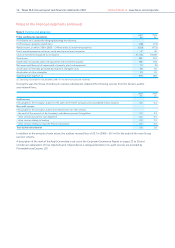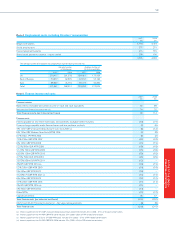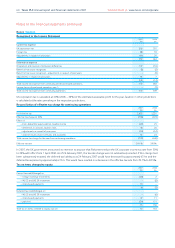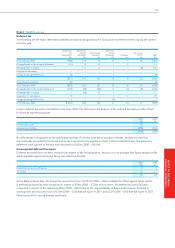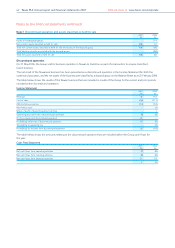Tesco 2007 Annual Report Download - page 54
Download and view the complete annual report
Please find page 54 of the 2007 Tesco annual report below. You can navigate through the pages in the report by either clicking on the pages listed below, or by using the keyword search tool below to find specific information within the annual report.
Notes to the Group financial statements continued
Note 1 Accounting policies continued
52 Tesco PLC Annual report and financial statements 2007 Find out more at www.tesco.com/corporate
Deferred tax is calculated at the tax rates that have been enacted
or substantively enacted by the Balance Sheet date. Deferred
tax is charged or credited in the Income Statement, except
when it relates to items charged or credited directly to equity,
in which case the deferred tax is also recognised in equity.
Deferred tax assets are recognised to the extent that it is
probable that taxable profits will be available against which
deductible temporary differences can be utilised.
The carrying amount of deferred tax assets is reviewed at each
Balance Sheet date and reduced to the extent that it is no
longer probable that sufficient taxable profits will be available
to allow all or part of the asset to be recovered.
Deferred tax assets and liabilities are offset against each other
when there is a legally enforceable right to set-off current
taxation assets against current taxation liabilities and it is the
intention to settle these on a net basis.
Foreign currencies
Transactions in foreign currencies are translated at the
exchange rate on the date of the transaction. At each Balance
Sheet date, monetary assets and liabilities that are denominated
in foreign currencies are retranslated at the rates prevailing on
the Balance Sheet date. All differences are taken to the Income
Statement for the period.
The financial statements of foreign subsidiaries are translated
into Pounds Sterling according to the functional currency
concept of IAS 21 ‘The Effects of Changes in Foreign Exchange
Rates’. Since the majority of consolidated companies operate as
independent entities within their local economic environment,
their respective local currency is the functional currency.
Therefore, assets and liabilities of overseas subsidiaries
denominated in foreign currencies are translated at exchange
rates prevailing at the date of the Group Balance Sheet; profits
and losses are translated into Pounds Sterling at average
exchange rates for the relevant accounting periods. Exchange
differences arising, if any, are classified as equity and
transferred to the Group’s translation reserve. Such translation
differences are recognised as income or expenses in the period
in which the operation is disposed of.
Goodwill and fair value adjustments arising on the acquisition
of a foreign entity are treated as assets and liabilities of the
foreign entity and translated at the closing rate.
Financial instruments
Financial assets and financial liabilities are recognised on the
Group’s Balance Sheet when the Group becomes a party to the
contractual provisions of the instrument.
Trade receivables
Trade receivables are non interest-bearing and are recognised
initially at fair value, and subsequently at amortised cost using
the effective interest rate method, reduced by appropriate
allowances for estimated irrecoverable amounts.
Investments
Investments are recognised at trade date. Investments are
classified as either held for trading or available-for-sale, and
are recognised at fair value.
For held for trading investments, gains and losses arising from
changes in fair value are recognised in the Income Statement.
For available-for-sale investments, gains and losses arising
from changes in fair value are recognised directly in equity, until
the security is disposed of or is determined to be impaired,
at which time the cumulative gain or loss previously recognised
in equity is included in the net result for the period. Interest
calculated using the effective interest rate method is
recognised in the Income Statement. Dividends on an
available-for-sale equity instrument are recognised in the
Income Statement when the entity’s right to receive payment
is established.
Financial liabilities and equity
Financial liabilities and equity instruments are classified
according to the substance of the contractual arrangements
entered into. An equity instrument is any contract that gives
a residual interest in the assets of the Group after deducting
all of its liabilities.
Interest-bearing borrowings
Interest-bearing bank loans and overdrafts are initially recorded
at fair value, net of attributable transaction costs. Subsequent
to initial recognition, interest-bearing borrowings are stated at
amortised cost with any difference between cost and
redemption value being recognised in the Income Statement
over the period of the borrowings on an effective interest basis.
Trade payables
Trade payables are non interest-bearing and are stated at
amortised cost.
Equity instruments
Equity instruments issued by the Company are recorded at the
proceeds received, net of direct issue costs.



